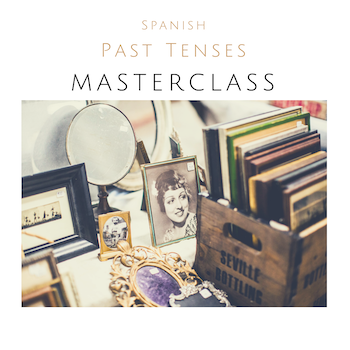
“I need to turn the video off and move away from the call for a minute”, I quivered, bawling my eyes out. Five minutes into the trauma training day 6 that I was so looking forward to attending, I had to leave in order to self-regulate. The day started with a check-in and empathetic listening with the aid of some cards. We had to choose one or two that we were drawn to or repelled by and explain how we related to them. I picked two, one that had a butterfly in a jar and another one with very flashy colours and words of encouragement whose sight annoyed me intensely. I did not know when I picked that card the deep meaning, aka. wound, it had. Unsurprisingly, when I started explaining how that card was annoying to me, the words I started uttering gave me an insight I had buried. “I feel uncomfortable when I receive words of praise. I do not believe them, and therefore, I struggle to give praise to others because I fear they will think it is fake” I felt naked when my realisation and their understanding were witnessed in real-time by them and me. The empathy in their eyes, the compassion, the empathic words: “That sounds so hard”.
Overwhelmed by my own emotions, I found it impossible to continue the practice of empathetic listening. I excused myself, seeking solace in the comforting presence of my dog. After a moment of self-care, I returned to the call, buoyed by the unwavering support of my peers. This act of self-care, of acknowledging my own needs and taking a moment to meet them, was transformative. It allowed me to return to the call with a renewed sense of purpose and understanding.
It starts with you
The trauma-informed training I am taking has been intense because we had to be open to exploring the trauma in ourselves so that we can be genuinely empathetic and compassionate with our learners and coachees… Watching videos of real-life situations where students were triggered and teachers were triggered too, or were adding fuel to the fire was painful.
It was painful to see everyone in pain.
It was painful to see the students in those videos angry, shouting, throwing things, feeling misunderstood, and seeing myself in them; it was painful to see the teachers angry, shouting back, exerting their power over the students, feeling out of control, and seeing myself in them. I’d been there, done that in both instances.
In the end, I realised that besides learning about types of trauma and about what’s going on in the brain and the rest of the body (hello hormones!) when we are triggered, and learning strategies for physiological regulation, psychotherapeutic models and relational interventions for trauma recovery, etc, what was the most important outcome of this training was that I was becoming the person I needed when I was growing up.
The emotionally available adult
I was learning to become the emotionally available adult I needed when I was always alone in recess, bullied by classmates or frozen silent when asked to speak by a teacher. I was learning to become the empathetic listener I needed when, as an adult (or young adult), I was overwhelmed or the compassionate ear when I messed up. I am learning to become the person I needed then, and I am learning to become the person I need now. And that is healing. The power of empathy, of truly understanding and validating another’s experience, is profound. It has the potential to heal wounds, both old and new, and to create a space of safety and understanding for those who need it most.
The proverbial can of worms
Often, teachers have told me that they avoid getting too personal with students for fear of opening a can of worms. That always felt wrong; now I know why. If we value mental health as much as physical health (by the way, both are intrinsically related), then would we sidestep a student who came to us saying they have a wound that is bleeding and:
- a) Ignore the words and the blood?
- b) Tell them to wait until the class is over to go to the hospital or tend to the wound?
Or, would we stop the class, tell them to go to a hospital immediately, or help them tend to the wound ourselves (ideally, we’d be trained to do so safely)?
Wounds are not only injuries to living tissue. Wounds can also be a mental or emotional hurt or blow. And both types need healing. Some wounds will be healed by time when they are superficial; others, the deep ones, will need professional assistance.
I used to believe that mental or emotional wounds were somewhat harmless. Of course, they can impact your life but not threaten it in the same way internal bleeding does. However, research tells us that a difficult childhood reduces life expectancy by 20 years among adults who experienced six or more particular types of abuse or household dysfunction as kids, while those who suffered fewer types of trauma lost fewer years of life”. So, childhood trauma threatens our lives, not only how we live.
Focusing on what you can control now
I couldn’t control being wounded in school or at home as a child, nor could I control not being adequately supported as a child by an emotionally available adult, being my parents, neighbours or teachers. But I can control the present: I can reparent my wounded inner child so that I can repair my own wounds so that I can be the emotionally available adult to my students and people in my sphere of impact.
Becoming the adult I needed growing up doesn’t only heal me, it has a ripple effect: It allows me to be able to “open the can of worms” and safely carry out therapeutical conversations (aka. healing conversations) with my students/coachees. It allows me to be a safe space to hold other’s emotions and stand in the glare of their pain so they can move through them without feeling shame or judgment. Sure, the ripples are sometimes wonky: I’m not perfect. I’m still sometimes triggered and emotionally unavailable. Still, practice makes better, and the difference between being emotionally available and trauma-informed versus emotionally unavailable and trauma-indifferent is glaring, and it is primarily noticeable in two areas:
- I feel different in my body: the former feels light and vibrant, the latter tense and heavy.
- The interaction feels strained and unsuccessful when I’m less emotionally available.
For me, there is no other path than the one that feels lighter, more vibrant and generative, although I sometimes go astray.
In every adult lurks a child—an eternal child, something that is always becoming, never completed, and calls for unceasing care, attention, and education. That is the part of the personality which wants to develop and become whole.
–Carl Jung
Tell me, do you feel a difference in your interactions when a person is emotionally available or when they aren’t?
What would it mean for you to become the adult you needed growing up?


